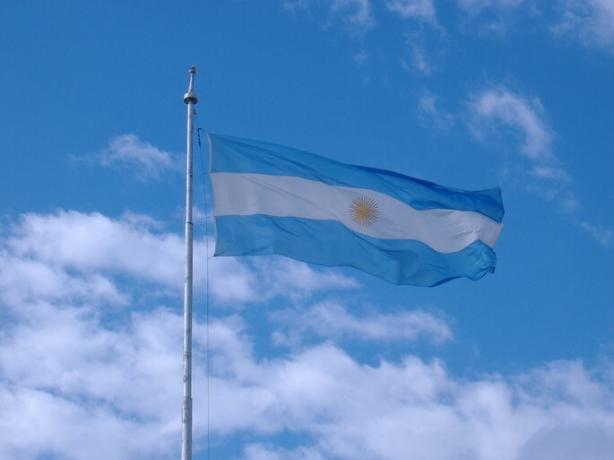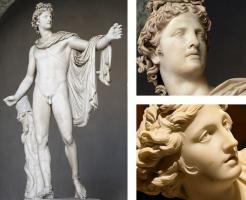Argentine national anthem: lyrics, history and meaning
The Argentinian national anthem was written by Vicente López y Planes in 1812, composed by Blas Parera in 1813 and arranged by the musician Juan P. Esnaola in 1860. The original version has a chorus and nine stanzas, each consisting of two decasyllable quatrains. However, by an official decree of 1900, only the first and last quatrain are performed, in addition to the chorus. The day of the Argentine national anthem is celebrated on May 11.
Current letter

STANZA
Hear, mortals, the sacred cry:
Freedom! Freedom! Freedom!
Hear the sound of broken chains;
See noble equality on the throne.
Their dignified throne has already been opened
the United Provinces of the South!
And the free of the world respond:
To the great Argentine people, cheers!CHORUS
Let the laurels be eternal
that we knew how to achieve:
Crowned with glory we live,
Or let us swear to die with glory!
Full letter
STROPH 1
Hear, mortals, the sacred cry:
Freedom! Freedom! Freedom!
Hear the sound of broken chains
See noble equality on the throne.
He rises on the face of the earth
a glorious new nation.
His temple crowned with laurels,
and to her plants rendered a lion.CHORUS
Let the laurels be eternal
that we knew how to achieve:
crowned with glory let us live,
or we swear with glory to die.STROPH 2
Of the new champions the faces
Mars itself seems to cheer.
Greatness nests in her breasts
as he goes, they make everything tremble.
The tombs of the Inca are moved,
and in her bones the burning revives,
What she sees renewing her children
the ancient splendor of the Fatherland.STROPH 3
But mountains and walls feel
rumble with horrible roar.
The whole country is troubled by screams
of revenge, of war, and fury.
In fierce tyrants envy
he spat out her foul gall.
Their bloody banner they raise
provoking the most cruel fight.STROPH 4
Don't you see them over Mexico and Quito
throw yourself with tenacious viciousness?
And which one cry, bathed in blood
Potosí, Cochabamba and La Paz?
Don't you see them over sad Caracas
mourning, and weeping, and scattering death?
Don't you see them devouring like wild beasts
all people who manage to surrender?STROPH 5
Argentines dare you
the pride of the vile invader.
Your fields are already counting
so many glories tread victorious.
But the brave who united swore
your happy freedom hold
to these bloodthirsty tigers
strong breasts will know how to oppose.STROPH 6
The brave Argentine to arms
runs burning with vigor and courage:
The clarion of war, like thunder
in the fields of the South it resounded.
Buenos Aires takes the lead
of the towns of the illustrious union.
And with sturdy arms they tear
the haughty Iberian lion.STROPH 7
San José, San Lorenzo, Suipacha,
both Piedras, Salta and Tucumán,
the colony and the same walls
of the tyrant in the Oriental band.
They are eternal signs that say:
here the Argentine arm triumphed;
here the fierce oppressor of the country
the proud cervix of him bent.STROPH 8
The victory to the Argentine warrior
with the bright wings of him covered.
And bewildered at his sight the tyrant
with infamy he fled.
Their flags, their weapons, they surrender
for trophies to freedom.
And on wings of glory the people rise
a throne worthy of his great majesty.STROPH 9
From one pole to the other it resonates
of fame the sonorous clarion.
And from America the name teaching
He repeats to them, mortals, hear:
Their dignified throne has already been opened
the United Provinces of the South.
And the free of the world respond
to the great Argentine people, cheers.
Story
In 1812, on behalf of the assembly, Manuel José García commissioned the patriotic song from Fray Cayetano Rodríguez and Vicente López y Planes, poet and lobbyist.
The initiative responded to the growing popularity of a libertarian hymn written by the playwright Luis Morante for the play 25 of May –Based on the Revolution of 1810–, which was presented at the Casa de la Comedia de Buenos Aires.
It is not clear what happened to Rodríguez's commission, but López y Planes' work was unveiled in front of the Cabildo in November 1812.
After an extension of the 1813 text, the anti-Spanish character of the letter was modified for a closer one the monarchical spirit, since England was against the autonomy of the colonies Spanish.
On May 11, 1813, the piece was made official under the name of Patriotic march. Then it was called National patriotic song, Patriotic song and, since 1847, Argentinian national anthem.
In the year 1860, the musician Juan P. Esnaola performed a new musical arrangement on Parera's composition, which has also been officially recognized.
In 1900, under the argument of endowing the hymn with "timelessness" and smoothing rough edges with diplomacy Spanish, General Julio Argentino Roca ordered that the stanzas be reduced to the first and last quatrain. It was thus that the Argentine national anthem reached its current form.
Meaning
The “sacred cry” of the Argentine national anthem is the phrase “¡Libertad! Liberty! Liberty!". This phrase condenses the fundamental meaning of the hymn that summarizes, on the one hand, the independence values of the southern nation, and on the other, the will to form a nation founded on the safeguarding of freedom for its citizens.
The desire for freedom is inherent with the political imaginary of the Enlightenment, promoted by the values of the French Revolution of 1789 that proclaimed the slogan of "equality, freedom and fraternity". These are the values on which the concept of the modern State and the concept of the Republic with separation of powers are based. Phrases such as “Hear the noise of broken chains; See noble equality on the throne ”.
The political imaginary of the nineteenth century, also touched by romantic ideals, gives these ideals a new meaning present in the Argentine anthem: the nation, that is, the idea of a modern State that coincides with the limits of a people united in its geography, language and culture, a people that shares a "identity". This is what allows the "free of the world" to recognize the existence of a "great Argentine people."
The hymn invokes the need for such values, deserved with intelligence and effort, to be timeless and, in this way, to be recognized and praised. Thus, he mentions the figure of laurels, a Greek symbol that represents victory. The text expresses, therefore, both the desire that those achievements be perennial and the commitment to commit life to maintaining them.
This sense is also present in the original text. However, it alludes to the concrete historical experience of Argentina since the Revolution. May 1810, which marked the beginning of the independence struggle with respect to Spanish rule.



